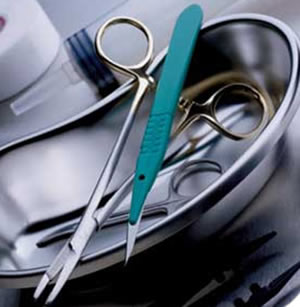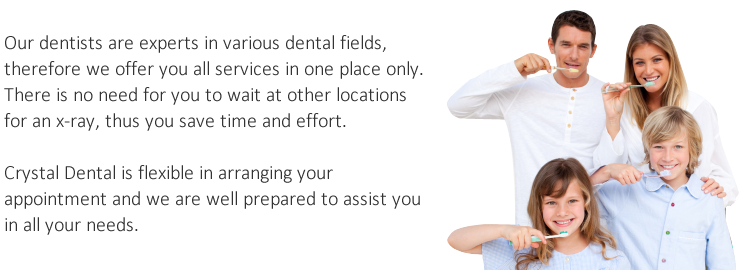
Oral surgery
Tooth extraction
- Simple (non-surgical) tooth extraction
- Surgical tooth extraction
Root resection
Tooth may become painful or diseased months or even years after root canal treatment caused by re-infection of the root. If the tooth's root canal is still showing signs of infection, more endodontic therapy may be needed to save the tooth.
When the tooth's infection or inflammation spreads in the bony area around the end of the tooth's root (root apex), and it is no longer possible to make the end of your tooth infection-free, root end resection surgery may need to be performed. Removing the unhealthy tooth root may help to save your tooth for the rest of your life.
Closure of sinus exposure
This can occur when upper molars are extracted, Patients have to take antibiotics after this dental process, and they have to follow careful instructions during the healing period
Cyst operations
The cysts may appear at jaws due to reasons depending to teeth and not depending to teeth. The cysts are smelting the bone in the jaws and can eventuate sufficient amount of bone loss. Without correct treatment they are causing fractures at the jaws, aesthetic and functional irregularity.
Implant placement
Dental implant is an artificial tooth root made of a bio-material, which is placed in the socket of the lost teeth to carry a tooth replacement. The material is generally pure, unalloyed titanium, which is completely accepted by the human body.
During preliminary examinations the doctor checks the patient to decide if placement of dental implants can be carried out. This includes a dental examination (which teeth must be substituted, if the jaw is suitable for receiving the implants, taking of X-ray shots, ect.)
Then comes the planning of the replacement during which the dentist consults the patient on any possible problems (how many implants would be needed, if the patient wants a temporary replacement during the period of osseointegration, the expected costs of tooth substitution, making a schedule, etc.).
The insertion of implants is carried out under local anaesthesia, except if the patient is over the age of 65 or the health condition requires it, IV sedation is mandatory. First the dentist prepares the given part of the jaw, then inserts the implant. After the check-up and the insertion of necessary temporary solution the implants' healing period begins.
The healing period lasts for about 3-4 months. During this time bone cells grow into the micro-pores created on the surface of the implant. This process is called osseointegration, and ensures the implants fix in place and become able to support a normal biting load long-term without any damage. The healing period is only different when oral surgery had also been involved during or before the implantation process. In the cases of bone replacement with implantation the healing time is 6 months, sinus lift with implantation is 8 months.
When the healing period is over and before tooth replacement takes place, the healing screws are inserted into the implants. These healing screws have gum-forming function before the actual crowns or bridges are fitted. First the boning process of the implants are uncovered, then abutment pieces are fitted into them to support or retain the replacement. Following this, the prosthesis is prepared in the dental laboratory and fixed onto the implant.
Contact between patient and dentist does not stop here, with placement of the new teeth. Among the most important criteria for long-run success in dental implantation are good mouth hygiene and regular medical check-ups. Patients wearing implant-based tooth replacement must regularly attend examinations once a year. Then the dentist verifies the state of the attachment of the bone and of the mucosa around the implant(s) and that of the tooth replacement, and makes the necessary corrections (e.g. removes plaque).
What are the advantages of implantation compared to traditional tooth replacement?
In case of one or a few missing teeth in the middle of the row the replacement can be prepared by the substitution of the root of the lost teeth, while traditional prosthetics can only solve this by damaging neighbouring healthy teeth.
Implants provide a way to create a fixed prosthesis also in cases when traditionally only a partial removable denture could be prepared.
In these cases implant-based tooth replacement provides more stability and better chewing strength than traditional solutions. Besides feeling physically better while eating, the patient feels psychologically better. All these factors together improve the patient's quality of life.
In case of total edentulism implants can serve as abutments to fix or retain a prosthesis in many ways. Implants can be used to stabilise the removable prosthesis (with the help of ball-headed attachments or retention bars), or a sufficient number of implants can fix a complete artificial row (bridge or overdenture).
The fixing of the tooth replacement onto the natural teeth or implants can be done by cementing or screwing (when the prosthesis is made to be removable by the dentist).
To all patients who choose this solution and who have no contraindications. However, implant-based tooth replacement is only recommended to those people who have proper mouth hygiene and are willing to follow the mouth hygiene rules proposed by the dentist.
Crucially for the success of the implantation, alcoholism, drug addiction and heavy smoking represent serious risk factors. Certain diseases can reduce the chance of success- like untreated diabetes, cardio-vascular diseases, and some other conditions.




